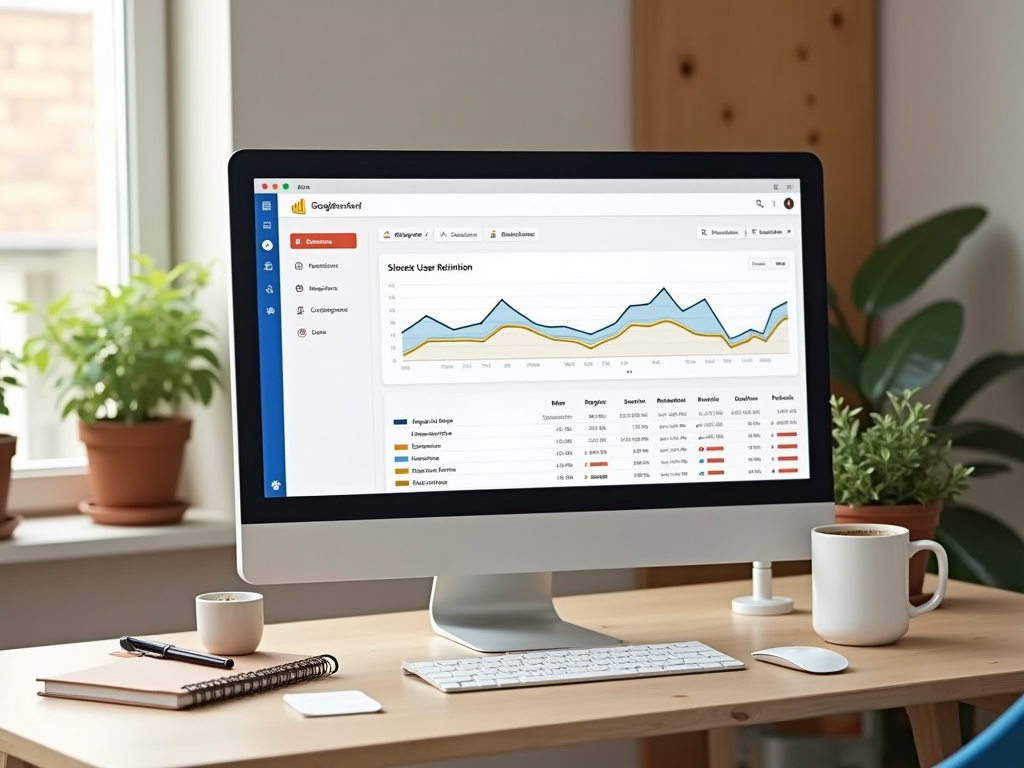User retention is a crucial metric for the success of any online business or service. Tools like Google Analytics provide invaluable insights into user behavior, helping businesses identify areas for improvement and optimize their strategies to keep users engaged. By leveraging Google Analytics, you can track various parameters that influence user retention rates, analyze user journeys, and implement strategies that encourage repeat visits. In this article, we will explore the key methods for using Google Analytics to enhance user retention rates effectively.
Understanding User Retention

User retention refers to the ability of a company to keep its customers over time. High retention rates indicate that users find your product valuable and are likely to return, while low rates suggest the opposite. Retention can be influenced by various factors, including user experience, content quality, and ongoing engagement. Businesses that track user retention effectively can better align their marketing strategies with user expectations. Google Analytics plays a vital role in measuring this metric by providing data on user interactions, behaviors, and overall satisfaction.
To improve user retention rates with Google Analytics, there are several vital metrics to monitor. Understanding these metrics will help you pinpoint what works and what needs improvement.
- Session Duration: This metric indicates the average length of time users spend on your website. A longer session duration often suggests that visitors find your content engaging.
- Pages per Session: This measures how many pages a user visits in one session. More pages per session typically denote higher interest and engagement.
- Bounce Rate: A high bounce rate may suggest that users are not finding what they expected. Lowering the bounce rate can help improve retention.
- Returning Visitor Rate: Tracking the percentage of returning visitors can provide direct insight into overall user satisfaction.
- User Flow: Understanding the paths that users take through your site can help identify potential drop-off points where users disengage.
Using Segments to Analyze User Behavior

Google Analytics allows you to create segments to analyze user behavior more closely. By categorizing users based on specific attributes, you can glean more targeted insights. For example, you can segment users who have made a purchase versus those who have just browsed. This segmentation will enable you to tailor your engagement strategies more effectively. With behavioral segments, you can identify high-value customers and those at risk of churn, allowing you to deploy tailored retention tactics. Additionally, understanding key characteristics of returning versus new users can inform your content strategy and marketing campaigns.
Setting Up Goals and Tracking Conversions
Setting up goals in Google Analytics is essential for tracking user retention effectively. Goals allow you to define specific actions you want users to take on your website, such as signing up for a newsletter or making a purchase. By monitoring these conversion goals, you can better understand the effectiveness of your strategies in retaining users. Here’s how to set up goals:
- Navigate to the Admin section of Google Analytics.
- Select your property and click on “Goals.”
- Click on “New Goal” and choose a template or set up a custom goal.
- Define the specifics of your goal, such as the destination URL or event type.
- Save your goal and start tracking conversions!
Implementing Changes and Measuring Impact
Once you have tracked metrics and gained insights, it’s time to implement changes to enhance user retention. This could include redesigning your site for better user experience, improving content quality, or offering targeted promotions. After changes are made, it’s essential to measure the impact of these implementations. Continuously monitoring the metrics discussed earlier will reveal whether your changes are effective. Regular analysis allows you to adapt your strategies as needed and ensures that your business remains aligned with user needs. A/B testing can also be an effective way to gauge the impact of changes, comparing user behavior before and after modifications.
Итог
In conclusion, Google Analytics is a powerful tool that can help businesses track and improve user retention rates. By understanding user behavior through key metrics, utilizing segments for targeted analysis, setting actionable goals, and implementing strategic changes, businesses can foster improved engagement and loyalty. Regularly analyzing data can aid in making informed decisions that benefit the user experience, ultimately leading to a robust retention strategy and sustainable growth.
Часто задаваемые вопросы
1. What is user retention?
User retention refers to the ability of a business to keep its customers over time, typically measured by the percentage of users who return to use a service or product after their initial visit.
2. How can Google Analytics help improve retention rates?
Google Analytics provides data on user behavior, engagement metrics, and conversion rates, which can help businesses identify patterns and areas needing improvement to enhance retention.
3. What are some key metrics to track in Google Analytics?
Key metrics include session duration, pages per session, bounce rate, returning visitor rate, and user flow. Monitoring these can provide insights into user engagement and retention.
4. Can I track specific goals in Google Analytics?
Yes, you can set up specific goals in Google Analytics to track desired user actions, such as signing up for a newsletter, making a purchase, or viewing key content pages.
5. How often should I analyze my retention metrics?
It is advisable to review your metrics regularly—monthly or quarterly—to track performance trends and make necessary adjustments to your strategies accordingly.
